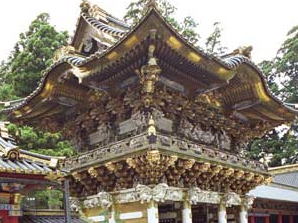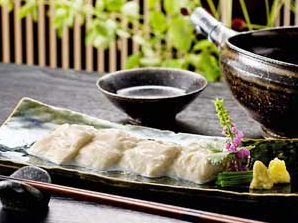Web Japan > Trends in Japan > Food & Travel > Nikko, City of History and Nature
Nikko, City of History and Nature
Potpourri of Scenic Beauty and Historic Architecture
Nikko is one of the most popular tourist destinations in Japan. It is famed above all for its historic temples and shrines, but the surrounding area also offers hot springs, scenic lakes, and even theme parks. With its rich blend of cultural heritage and natural beauty, including foliage that takes on fiery hues in the fall, Nikko has long been loved by both domestic and foreign travelers.
Majestic Monuments The city of Nikko is located in Tochigi Prefecture, in the north of the Kanto region. Only about two hours from Tokyo by express train, the city began its history in the eighth century when the temple currently known as Rinnoji was erected there. Nikko developed as a pilgrimage destination, being home not only to Rinnoji but also to the glorious Nikko Toshogu shrine, and a highway was laid from Edo (present-day Tokyo) to Nikko to make it easier for pilgrims to travel there from the capital.
The indisputable centerpiece of Nikko's attractions is the Nikko Toshogu shrine, which was built in 1617 as the mausoleum of the shogun Tokugawa Ieyasu, who established the Tokugawa Shogunate and ushered in an long period of peace in Japan. Initially only a modest facility, the shrine was later rebuilt under the orders of Ieyasu's grandson Iemitsu, the third Tokugawa shogun. Tokugawa Iemitsu brought in the top architects, artists, and craftsmen from all over Japan, and they turned it into the brilliant and lavish architectural complex it is today. An estimated 4.5 million people were involved in its construction.
A majestic air fills the shrine's extensive grounds, which include an array of structures decorated with lacquer work, vivid colors, and intricate carvings. The Yomei-Mon Gate and other buildings are carved with a total of some 5,000 sculptures, and the dazzling fusion of Edo-period (1603-1868) artistry is nothing short of stunning.
The main structures comprising Nikko Toshogu have all been designated by the Japanese government as either national treasures or important cultural properties. In 1999, moreover, the "Shrines and Temples of Nikko," including Nikko Toshogu and Rinnoji, were added to the UNESCO World Heritage list.
Natural Splendor Since the Meiji era (1868-1912) Nikko has also developed as a summer retreat for foreign residents and visitors. Not far from central Nikko is Oku-Nikko, part of the Nikko National Park, an area of natural beauty where the fresh greenery of spring and fiery colors of fall are particularly striking. Lake Chuzenji, the highlight of the area, was created as the result of a volcanic eruption. The lake offers spectacular views - both direct and reflected in its crystal-clear water - of the surrounding scenery.
Nearby is Kegon Falls, where the water from Lake Chuzenji makes a vertical drop of nearly 100 meters. Kegon Falls are counted among the three finest waterfalls in Japan. They are also officially recognized by the government as a place of scenic beauty.
Boasting a number of trekking routes and less challenging walking courses, Oku-Nikko is the perfect place to immerse oneself in the tranquility and beauty of nature.
A Feast for the Senses Kinugawa Onsen, a renowned hot spring resort, lies just a short trip from Nikko. Near the resort is Edo Wonderland Nikko Edomura, a theme park where the culture and lifestyle of Edo-period Japan is recreated and reenacted. Here visitors can view ninja action shows and other attractions. Kinugawa Onsen and Nikko Edomura are great places to enjoy with family and friends.
When it comes to cuisine, the specialty of Nikko is yuba, a subtle, protein-packed delicacy made by skimming off the film that forms on the surface of heated soy milk. Fresh, unprocessed yuba is called nama-yuba and is typically eaten with just soy sauce and wasabi. Flat-dried yuba, known as hira-yuba, is commonly used in soups, while deep-fried rolls of yuba, known as agemaki yuba, is often cooked in broth. Yuba can also be eaten as a topping for soba (buckwheat noodles); recently, people have even begun to make yuba sushi and yuba curry. (March 2009)
- Edo Birthday Bash (April 16, 2003)



